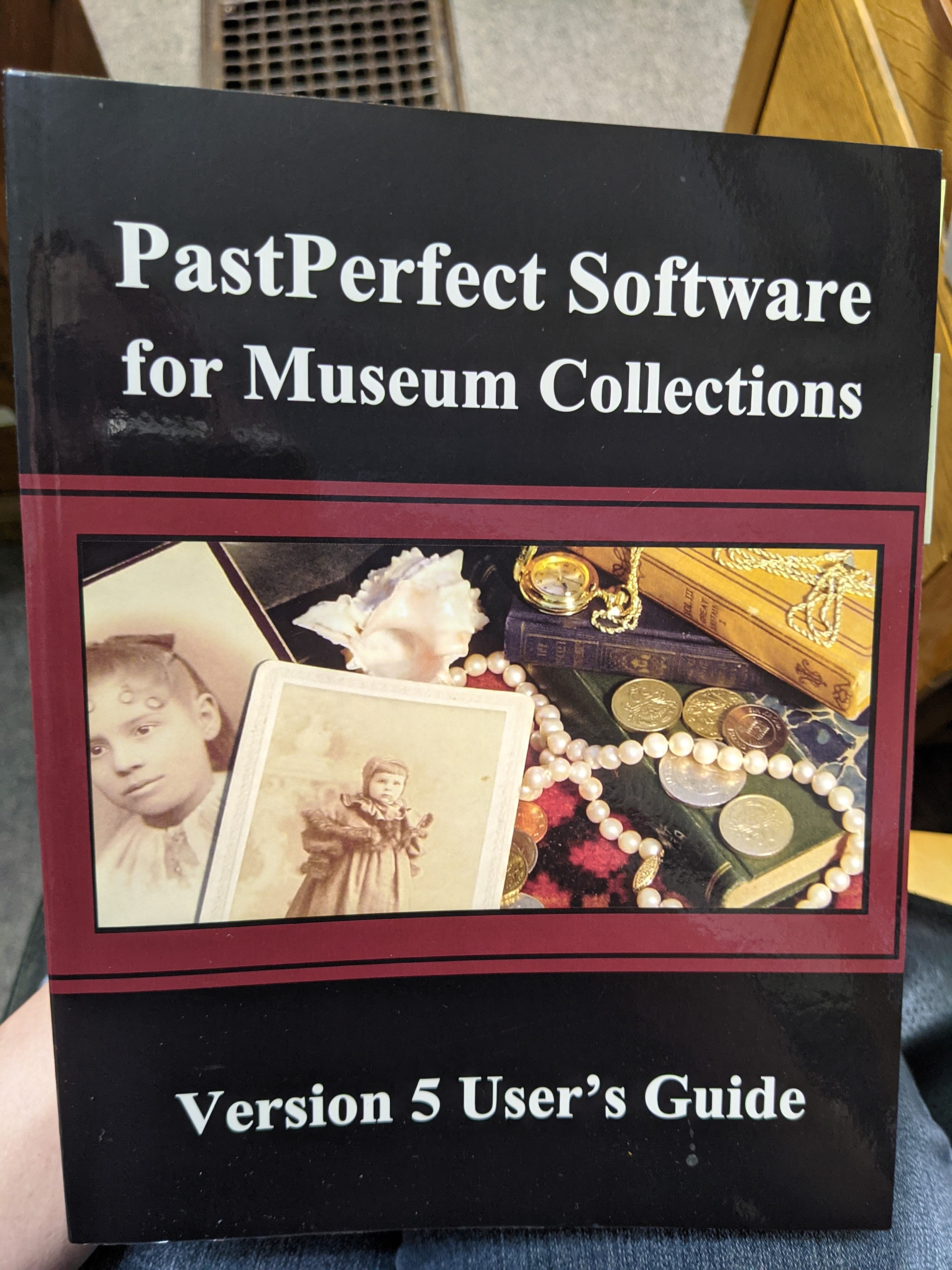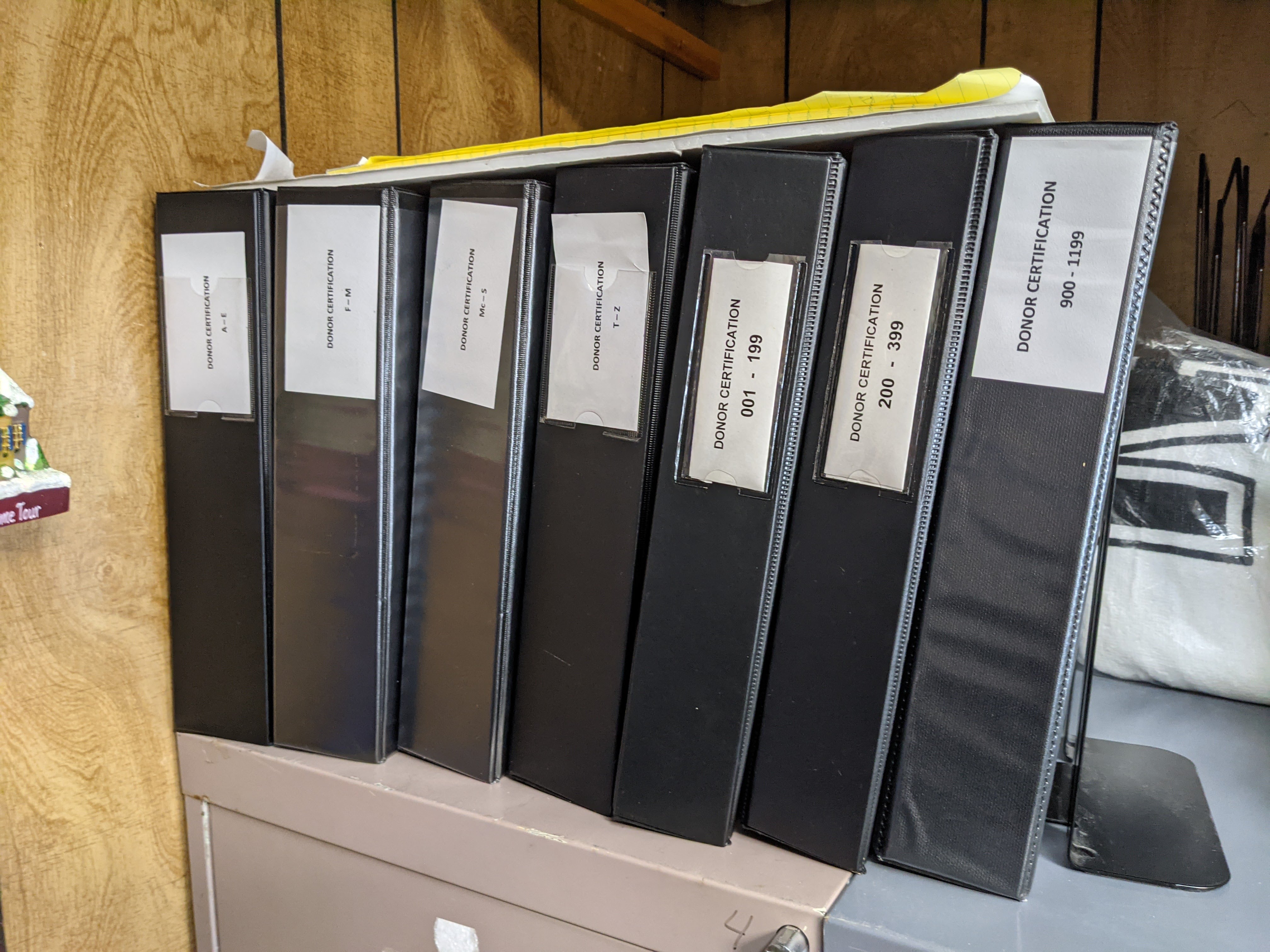Starting to Catalog with PastPerfect

Collections care starts with good record keeping. Without it, the stories behind the objects would be lost. The objects in my museum’s collection have very sparse records. Some objects have numbers and others don’t. Without the volunteers who accepted them, there’d be no way to know who donated some things.
In the Begining
One of the first projects I was tasked with at the museum was scanning their accession records to pdf. This was a long and rather boring process. I tended to listen to music or an audiobook while doing it, it really helped the time tick by a bit faster. This was before I was introduced to Past Perfect Museum Software. I had applied to grad school but had yet to get in. The records are carbon copy paper housed in a series of black binders in duplicate. One set was alphabetical and one by accession number. At the time I knew that it wasn’t the best system as it wasn’t searchable by object but didn’t know what to use instead.

And by introduced I mean that PastPerfect was passively mentioned on the very first day of my very first museum class. We were given a tour of the Detroit Historical Museum and our guide mentioned that it was the system that they used to keep track of their collection records. After that, I looked into it and found that it was made for smaller museums and hoped that an $800+ price tag wasn’t too steep for the museum’s budget. I also looked to see if there was an open software or a free version but was unable to find something suitable.
I began talking about it at the weekly meetings at the museum. As well as how we needed to do an inventory of the museum because some objects didn’t have numbers on them and some records only specified that things like a hat were donated. No mention of the year it was made, the material or any other indicator of how to identify which of the many hats we have at the museum went with the accession papers.
Bernie was probably my biggest advocate, though everyone agreed it needed to be done. I was surprised when it was announced that not only were we getting past perfect but that we were getting a new computer for it to be installed on as well, but that it would be a few months till we could get it.
Preping
Anticipating that we would be getting PastPerfect I started typing up our accessions paperwork into an excel sheet. I made sure it would be able to transfer over before starting. I really had no idea what fields PastPerfect had, so I was hoping that it worked out. Thankfully, I had help with this step from another volunteer at the museum. Who needed 20 volunteer hours for a college class. This process took so much longer than just scanning the documents. And again I used songs to move the job along. It took months to get to 850 or so.
While doing this I became more familiar with the museum’s collection. But I still didn’t know what some of the stuff I was typing was. I’m pretty good with cursive, for my age, but I wasn’t able to figure out some of them. I had to ask for help from some of our older volunteers from time to time. Usually, they were able to figure it out from context clues or from being the person who accepted the donation. Most things none of us could read were street names from the 80s so it could have been worse.
PastPerfect

When the new computer arrived, donated by one of the volunteer’s nephews, Gary was finally able to order PastPerfect. It came in the mail with a very large instruction book. Then it was time to transfer everything over. Except I had no idea how to do it. It took me two Wednesdays to figure it out. Turns out it was a rather silly user error. I couldn’t have the excel file open while I transferred the data.
Once what I had was all transferred and I went into the files on Past perfect and noticed that the contacts/donors weren’t put in correctly. I hadn’t separated the fields/cells enough in Excel. So then came yet another tedious job of adding over 800 contacts. For this, I was able to enlist some help from some of the other volunteers. They were able to come in during some of our off hours to get it done faster.
After finishing that the next step has been to connect the donors to the items through the accession section in the program. For this, I haven’t had as much help but at least I’ve gotten up to the records from 2004. Only 8 more years to go, then I’ll have to go from our paper records. hahaha… I’m not crying you’re crying….
The biggest problem I’ve had so far was some of the accession numbers didn’t match their objects so I had to do in and renumber about 50 objects. Somewhere in the excel, a number got doubled and that carried over to all the other affected files. Once I figured out what I needed to do it was a pretty easy, though again tedious, fix. Tedious seems to be a theme for this project, but I’ve been listening to some great audiobooks lately and I’ll be at the fun part soon.